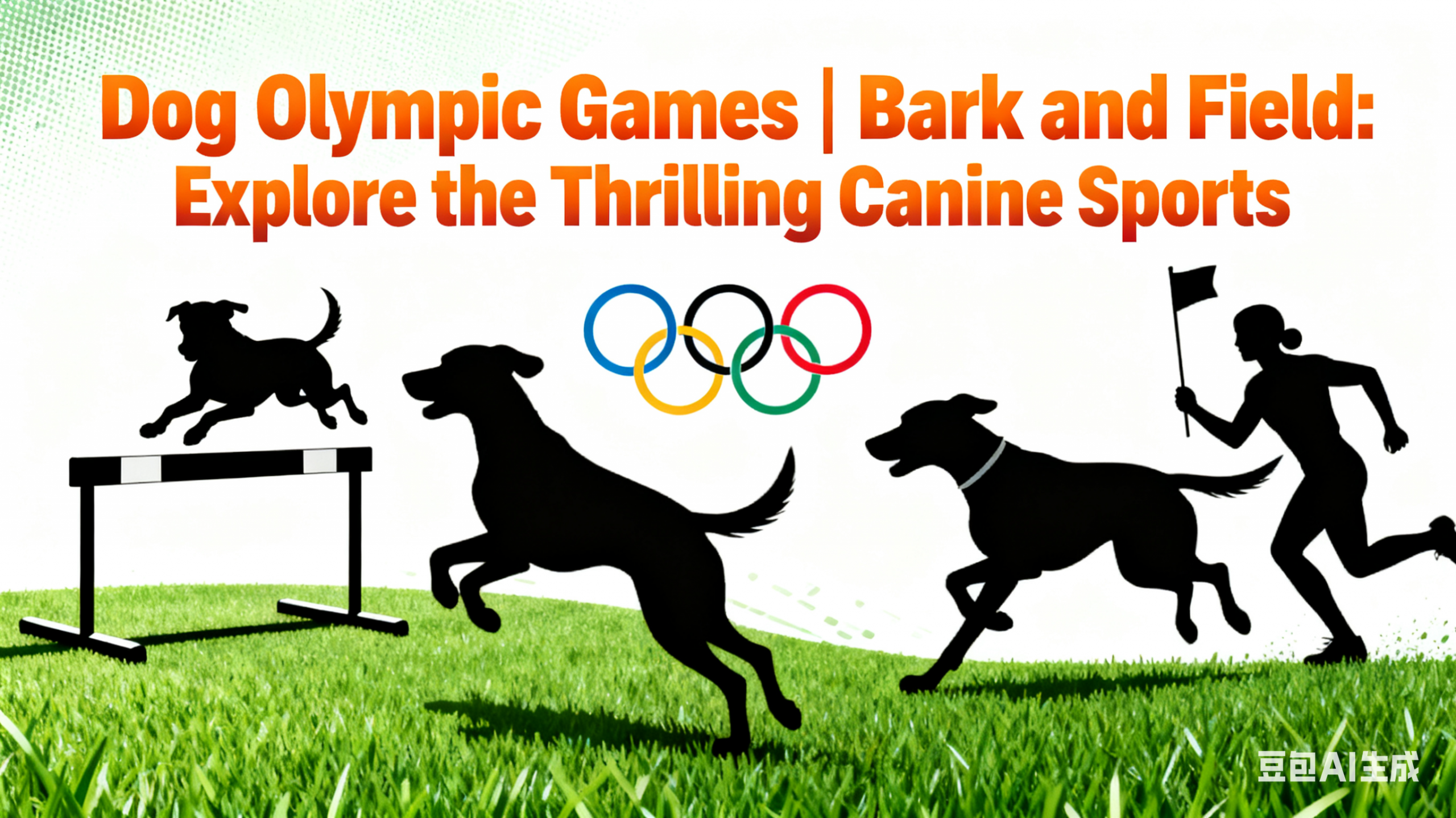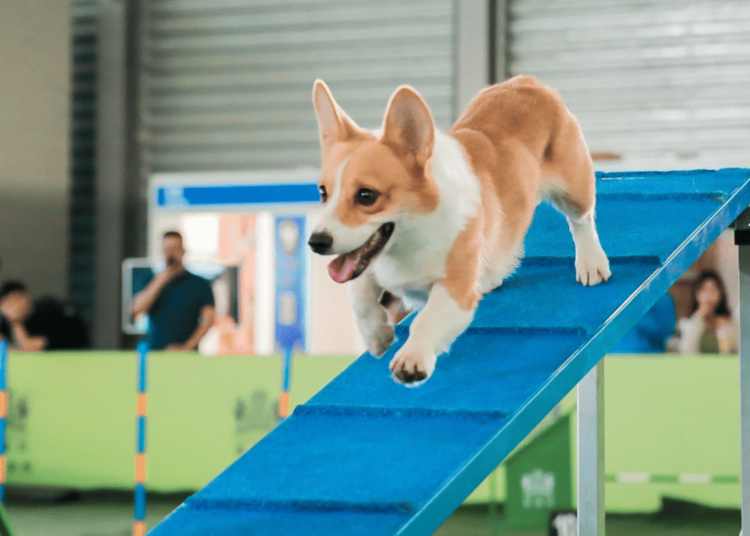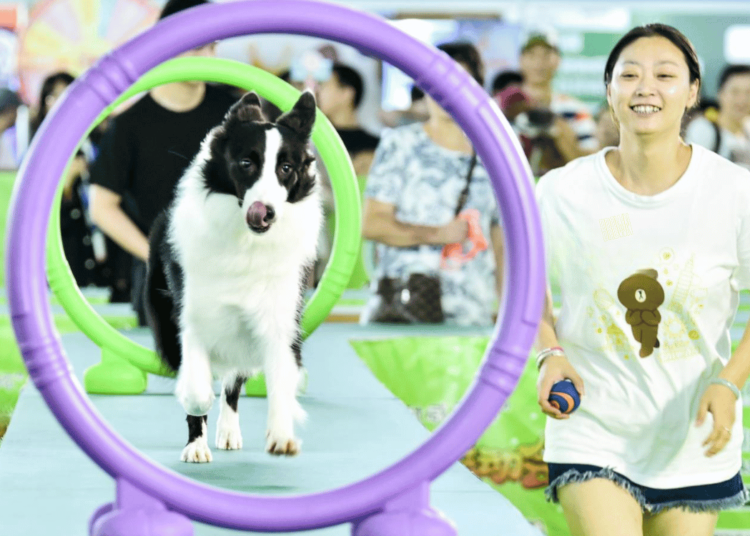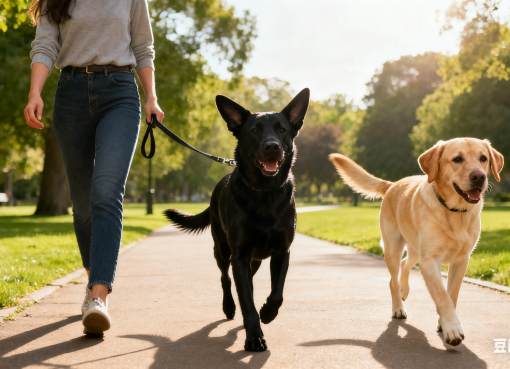Dog Olympic Games | Bark and Field: Explore the Thrilling Canine Sports

Table of Contents
- Introduction: The Magic of the Dog Olympic Games
- Origins & Evolution: How Dog Olympic Games Grew
- Key Milestones: From Local Shows to Global Spectacles
- Top Breeds of Dog Olympic Games: Athletes & Their Strengths
- Inspirational Canine Athletes: Legends of the Dog Olympics
- Thrilling Events of Dog Olympic Games: Rules & Highlights
- Challenges & Controversies: Protecting Canine Athletes
- The Future of Dog Olympic Games: Innovation & Growth
- Conclusion: Celebrating the Bond Behind Dog Olympic Games
Introduction: The Magic of the Dog Olympic Games
Imagine paws pounding the track, tails wagging mid-leap, and the roar of a crowd cheering on furry athletes—this is the Dog Olympic Games, where canine energy meets competitive joy. For dog lovers, these events aren’t just sports; they’re a celebration of the unbreakable bond between humans and their pups.
From agility courses that test speed to dock diving that showcases courage, the Dog Olympic Games turn ordinary dogs into superstars. In this guide, we’ll explore everything you need to know about this thrilling world: its history, top breeds, must-watch events, and the heartwarming stories that make it unforgettable.

Origins & Evolution: How Dog Olympic Games Grew
The Dog Olympic Games didn’t start as a global spectacle—its roots trace back to the early 1900s, when dog lovers and trainers hosted small, informal competitions at local fairs and dog shows. These early events focused on basic skills: obedience trials, simple races, and even “best trick” contests.
Back then, the goal was simple: to show off how smart and athletic dogs could be. As pet ownership grew and canine sports gained popularity, these small shows evolved. In 1976, the first official World Canine Games launched in Austria—bringing together 3,000 dogs from 22 countries. For the first time, the world saw dogs compete in structured events like herding trials, weight pulling, and advanced agility.
Today, the Dog Olympic Games include iconic events like the Crufts Dog Show (UK) and the Westminster Kennel Club Dog Show (US), drawing thousands of competitors and millions of viewers. What began as a hobby has become a global celebration of canine talent.
Key Milestones: From Local Shows to Global Spectacles
The modern Dog Olympic Games have a rich history of key moments that shaped their growth:
- 1903: The first International Dog Olympics is held, bringing together dog lovers from across Europe to compete in obedience and racing. It’s the first time canine sports are recognized as a “unifying” activity.
- 1976: World Canine Games launch in Austria, introducing standardized rules for agility and herding events—setting the stage for global competition.
- 1990s: Freestyle flying disc (dog frisbee) and dock diving are added to major events, turning the games into a more dynamic, family-friendly spectacle.
- 2010s: Live streaming of events begins, letting fans worldwide watch their favorite canine athletes compete—boosting the games’ popularity by 40% (per American Kennel Club data, a DoFollow link).
Each milestone didn’t just grow the games—it also highlighted the importance of canine well-being, pushing organizers to add rules that protect competing dogs.
Top Breeds of Dog Olympic Games: Athletes & Their Strengths
Not all breeds thrive in the Dog Olympic Games—some are born athletes, with traits that make them perfect for specific events. Here are the top contenders and their superpowers:
- German Shepherds: The “all-stars” of obedience and protection sports. Their intelligence and trainability let them excel at following complex commands, while their strength shines in weight-pulling events.
- Border Collies: Agility royalty. With sharp reflexes and a love for speed, they dominate obstacle courses—often finishing 10-15 seconds faster than other breeds. They also shine in freestyle flying disc, thanks to their ability to leap high and catch mid-air.
- Labrador Retrievers: Water lovers and sprinters. Labs rule dock diving (their webbed paws help them jump farther) and field trials (they’re natural retrievers, perfect for fetching targets).
- Golden Retrievers: The “crowd favorites.” They’re gentle but athletic, excelling in obedience and agility—plus their friendly demeanor makes them fan magnets.
- Belgian Malinois: Speed demons. These pups hold most of the 100-meter sprint records in the Dog Olympic Games, with some reaching speeds of 30 mph.
While these breeds are common, mixed-breed dogs also compete—and win! The games celebrate talent, not just pedigree.
Inspirational Canine Athletes: Legends of the Dog Olympics
The Dog Olympic Games have produced some unforgettable stars—dogs that turned skill into inspiration:
- Ricky Bobby (Border Collie): The agility goat. He won 12 consecutive agility championships between 2018-2022, known for his perfect runs (no missed obstacles!) and telepathic bond with his trainer.
- Sky (Border Collie): The frisbee queen. Since 2012, she’s wowed crowds with backflips and 10-foot jumps to catch discs—her routines even include dance moves set to music.
- Nitro (Belgian Malinois): The fastest dog alive (in the games). Since 2016, he’s held the 100-meter sprint record at 5.9 seconds—faster than many human Olympic athletes!
- Flash (Labrador Retriever): The dock diving king. He holds the record for the longest jump (31 feet!) and once jumped 28 feet while recovering from a leg injury—proving heart matters as much as skill.
These dogs aren’t just champions—they show that with training, love, and patience, any dog can be an athlete.

Thrilling Events of Dog Olympic Games: Rules & Highlights
The Dog Olympic Games are packed with events that test different skills. Here are the most popular ones, plus their key rules:
1. Agility Courses
- What it is: Dogs race through a course of tunnels, weave poles, jumps, and A-frames—guided only by their trainer’s hand signals.
- Rules: The fastest time wins, but penalties (like knocking over a jump bar) add seconds. Dogs must complete the course without help.
- Highlight: Watch for Border Collies—they often finish courses in under 30 seconds!
2. Dock Diving
- What it is: Dogs run down a dock and leap into a pool; the longest jump (measured from dock to paw) wins.
- Rules: Dogs can’t be pushed, and they have 60 seconds to make their jump. Some events add “height” categories for vertical leaps.
- Highlight: Labs and Goldens dominate here—Flash’s 31-foot jump is still the stuff of legend.
3. Freestyle Flying Disc
- What it is: Trainers and dogs perform choreographed routines (2-3 minutes) with frisbees, including catches, flips, and spins.
- Rules: Judges score on creativity, difficulty, and teamwork. Routines must be set to music.
- Highlight: Sky’s “backflip catch” is one of the most viral moments in the games’ history.
4. Obedience Trials
- What it is: Dogs perform precise commands (sit, stay, heel, come) in a quiet, controlled space.
- Rules: No treats or toys allowed—dogs must respond only to their trainer’s voice. Judges score on accuracy and focus.
- Highlight: German Shepherds often get perfect scores here, thanks to their loyalty and discipline.
Challenges & Controversies: Protecting Canine Athletes
While the Dog Olympic Games are thrilling, they face real challenges—mostly around canine health and ethics:
- Injuries: Like human athletes, dogs can pull muscles, twist joints, or overheat. Organizers now require pre-event vet checks and limit how many events a dog can compete in per day.
- Training Methods: Some trainers use harsh tactics (like shock collars) to force results. The games now ban these methods, and only trainers who use positive reinforcement (treats, praise) are allowed to compete.
- Fatigue: Traveling to events can stress dogs out. Many organizers now offer “rest areas” for pups and limit long-distance travel between competitions.
The good news? Groups like the World Canine Sports Federation work with organizers to update rules—putting dog well-being first.
The Future of Dog Olympic Games: Innovation & Growth
The Dog Olympic Games are only getting bigger—and more innovative. Here’s what’s next:
- Tech Integration: Trainers are using GPS collars to track speed and agility during practice, helping them tweak routines for better performance. Some events are adding “slow-mo replay” for judges to review close calls.
- Global Expansion: More countries (like Japan, Brazil, and India) are hosting local Dog Olympic events, leading to a more diverse lineup of athletes. The 2025 World Canine Games will be held in Tokyo—marking the first time it’s hosted in Asia.
- New Events: “Canine Parkour” (dogs climb, jump, and balance on urban obstacles) and “Scent Trials” (dogs find hidden objects) are being tested as new events—adding even more variety.
The future isn’t just about bigger crowds—it’s about making the games more inclusive for all dogs, regardless of breed or background.
Conclusion: Celebrating the Bond Behind Dog Olympic Games
At its core, the Dog Olympic Games aren’t about winning—it’s about the bond between a dog and their trainer. Every leap, every catch, every perfect command is a testament to love, trust, and hard work.
Whether you’re watching a Border Collie zip through agility or a Lab leap into a pool, you’re seeing something special: two beings working as one. As the games grow, they’ll keep reminding us of what makes dogs so amazing—their loyalty, their energy, and their ability to turn ordinary moments into magic.
To learn how to keep your own dog healthy (whether they’re an athlete or a couch potato), check out our guide: How to Choose a Vet for Your Pet — because every dog deserves top-notch care.




Leave a Comment